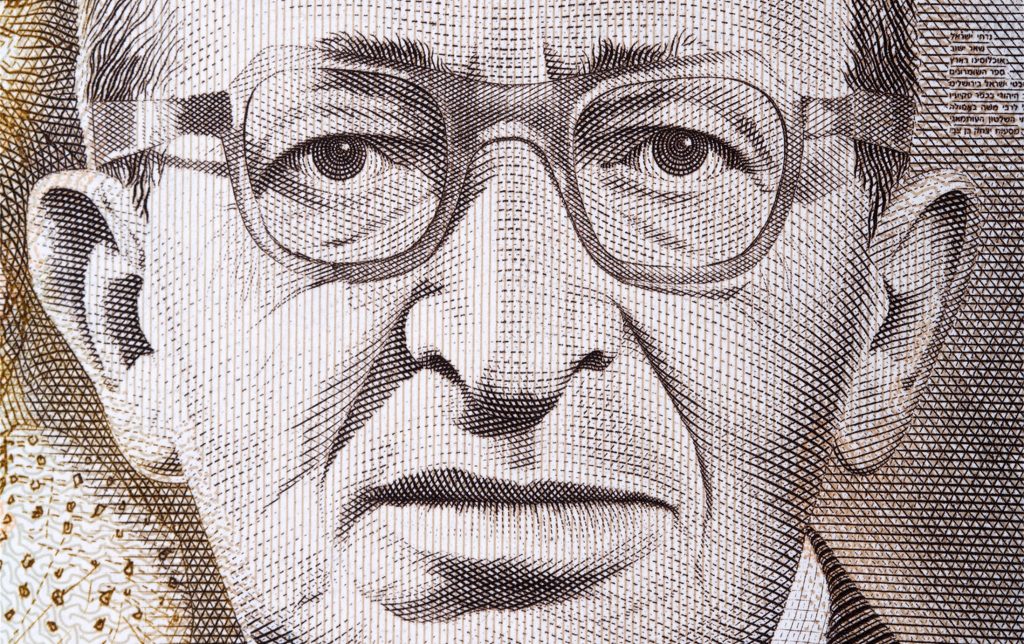Yitzhak Ben-Zvi (1884–1963)
Yitzhak Ben-Zvi, né Shimshelevich, was born into the Jewish family of Zvi Shimshelevich and Atara Kopelevich in Poltava in 1884. He received his primary education at a heder and continued his studies at the gymnasium in Poltava. After that, he entered Kyiv University but discontinued his studies in 1905 as he became actively involved in a Jewish self-defense unit during the Jewish pogroms. Because of this, the police searched his house, arresting his family members and later exiling them to Siberia. Ben-Zvi soon found a way to move to Vilno (Vilnius) and then settled in Palestine in 1907, where he and David Ben-Gurion founded Hashomer, a Jewish self-defense organization. This was the starting point of his political career. Subsequently, Yitzhak was elected as a delegate of the Poale Zion party at the 8th World Zionist Congress in The Hague.
In 1910, Ben-Zvi was actively working on Ahdut, the first socialist Hebrew-language magazine in Eretz Yisrael published in Jerusalem. Working side by side with him was Rachel Yanait (born in 1886, née Golda Lishansky), a native of the Zhytomyr region, whom he later married. She studied at a heder, then received her education at the local gymnasium while giving private Hebrew lessons. She later studied in Kyiv and Germany, where she was a botany and zoology student at the University of Jena.
During 1912–1914, Ben-Zvi studied law at Istanbul University. At the beginning of the First World War, the Turkish authorities expelled him and Ben-Gurion, the future first prime minister of Israel, on charges of Zionist activities and closed the Ahdut magazine in 1915. Together with other Zionist leaders, they were deported to the United States, where they soon founded the Jewish Legion. Ben-Zvi and Ben-Gurion returned to Palestine in 1918, taking prominent positions in the Jewish community, which Great Britain governed under the League of Nations mandate at the time.
Ben-Zvi became the president of the Jewish National Council in 1944 and was twice elected to the Knesset in 1949 and 1951. He was elected President of Israel on 8 December 1952, and then re-elected in 1957 and 1962. However, he died on 23 April 1963 without completing his third term. Ben-Zvi is buried at the Har HaMenuchot cemetery in Jerusalem.
For 26 years, the Ben-Zvi family lived in a wooden house in the Rehavia neighborhood of Jerusalem. Twice a year during the holidays, their home opened its doors to the general public. After her husband's death, his wife Rachel lived another 16 years. In the last years, she wrote memoirs, developed the Yad Yizhak Ben-Zvi Institute, and perpetuated the memory of her son Eli, who died during an Arab attack on Kibbutz Beit Keshet in 1948.
Yitzhak Ben-Zvi became the founder of the Institute for the Study of Jewish Communities in the East, known today as the Yad Yizhak Ben-Zvi Institute. Its publishing house annually issues dozens of magazines, books, and monographs. Yad Yizhak Ben-Zvi offers a large number of courses, seminars, lectures, and tours of Jerusalem.
Multiple streets and boulevards in Israel bear the name of Yitzhak Ben-Zvi, and he was depicted on the 100-shekel banknote for a long time.




















